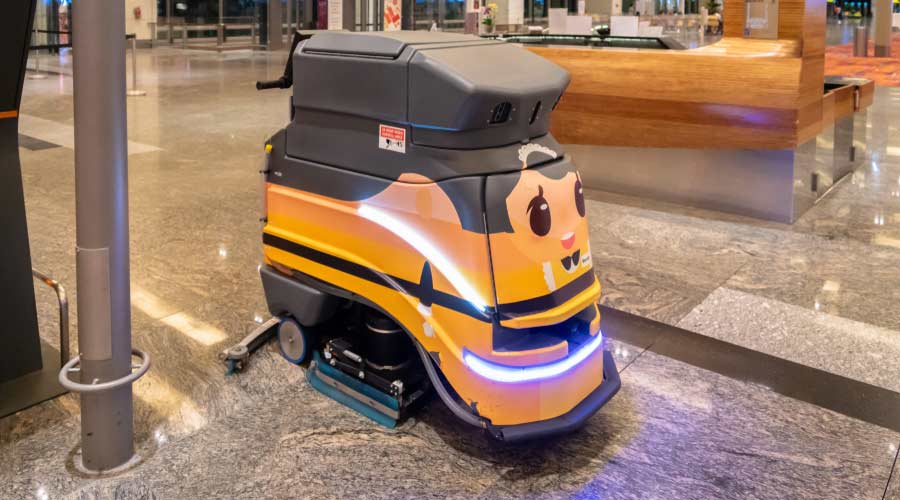
Over the last few years, pandemic aside, the cleaning industry continues to fill column inches about robotic and autonomous cleaning, continues to talk about the many improvements that such technology can bring but doesn’t overtly translate that into increasing deployments of such machines.
Why would you want a cleaning robot?
Why do we continue to talk about robotics, rather than adopting them?
The Benefits of Robotic Cleaning
The robotization of cleaning allows for an increase in the quality and availability of cleaning within a facility. Do cleaning staff constantly and proactively walk a facility looking for cleaning tasks? It’s not common, but this is exactly what autonomous cleaning brings in the form of robotization. And it improves it in three specific ways:
• Application - Whether it’s a wet or dry scrubber, a vacuum machine or a multi discipline hybrid machine, a robot can clean thoroughly wherever it is needed, without additional tools or resources, carrying everything it needs onboard.
• Dedication - Depending on the facility type and the machines involved, a robotic cleaner may be in a constant state of vigilance looking for areas in need of cleaning, or be diverted from their rounds to attend to specific cleaning needs by their operator.
• Collaboration - Telemetry from machines and a wealth of cleaning data can help machines and humans understand more exactly what the cleaning needs of a facility are. What patterns emerge that allow greater efficiency, what issues are faced repeatedly that need resolution.
All of these aspects mean that the human that used to do this work is now freed up for more important, or more meaningful tasks. The robot is not a replacement for the human, they are a collaborative tool that can work without constant supervision. They still report to their human, can be redirected by them, but it also allows their human partner to do more through doing less.
Adopting a Robot Cleaner
As we have seen elsewhere, cost will be a significant consideration over the coming months and years, this applies even more so where adoption of new technology is concerned.
When it comes to cost, implementing robotic or autonomous cleaning in a facility can have many cost implications from purchase, to training to ongoing maintenance or management costs. While total cost of ownership and operational cost efficiency are factors in many business decisions, cleaning robotics are also still in an early adoption phase. Initial investment can be significant and case studies, data driven calculations and the potential for ongoing cleaning improvements based on collected data are a vital part of the consideration process. As a result of this, a number of machine manufacturers and distributors have offered leasing models for machinery to alleviate some of the initial investment costs.
With the data collection and analysis noted in the previous section, facilities that adopt robotic cleaning machines can also assess longer term costs such as resource use (water, power, chemicals) and plan more accurately and according to their anticipated needs.
Where there is perhaps more uptake is in new builds, specifically smart buildings that can house advanced cleaning technology in an integral way and build costs into development. As more of these constructions are signed off and become part of the cleaning zeitgeist, adoption will spread to other facilities.
The more people encounter robotic cleaning in the buildings and businesses they visit, creating a critical mass of awareness, the more they will expect to see them elsewhere, or rather, begin to make a distinction between places where proactive cleaning is automated for maximum hygiene and efficiency, and places where it is reactive or scheduled to fit specific patterns.
Commercial Cleaning is a People Business
Lowering Costs and Cleaning Smarter

 The Down and Dirty on Cleaning in Virus Season
The Down and Dirty on Cleaning in Virus Season How Surfactant Use is Expanding in Commercial Cleaning
How Surfactant Use is Expanding in Commercial Cleaning Maximize Your Margins: Learn How to Automate Pricing and Track Rebates
Maximize Your Margins: Learn How to Automate Pricing and Track Rebates